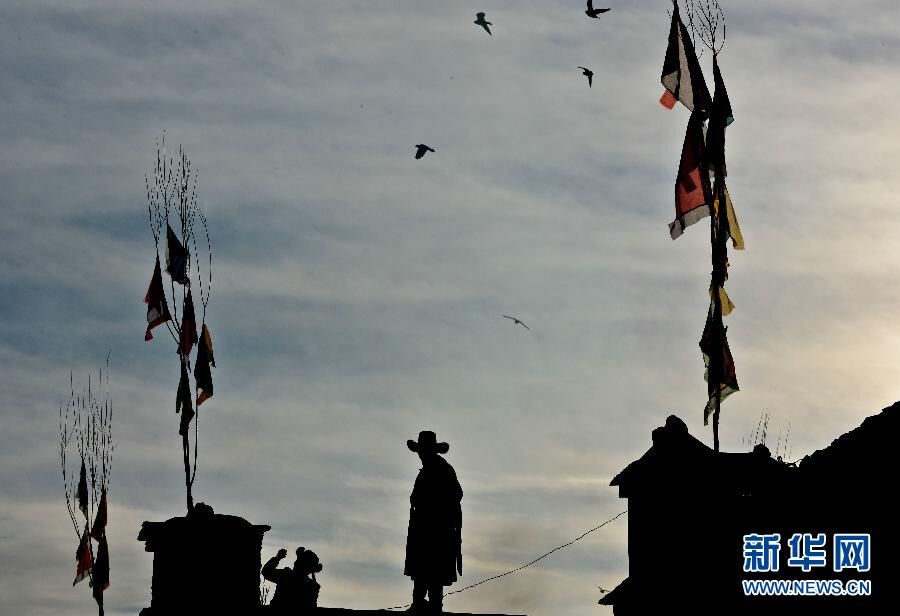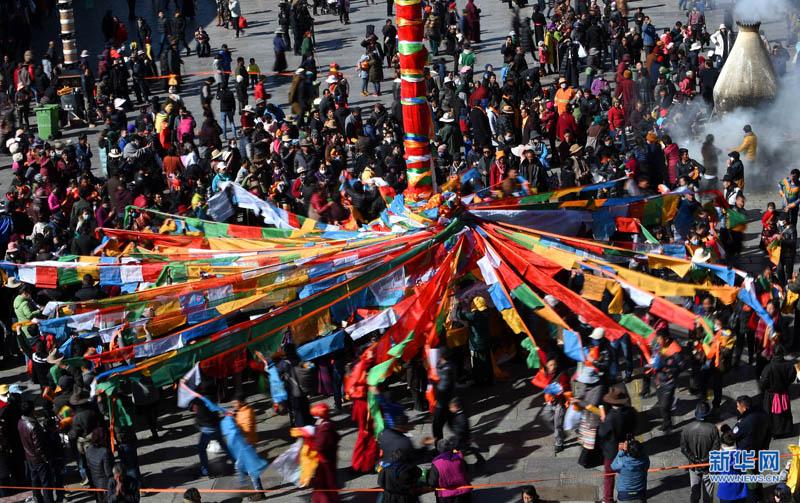Why Tibetans hang prayer flags on rooftop?

Tibetan people change the "tar-jok" on the rooftop . [Photo/Xinhua]
It is the second day of the Tibetan New Year on February 28th.
At about 8 o'clock in the morning, as a trace of white light just appears on the horizon, Lhasa resident Drolgar puts on her newly-ordered New Year's dress and nimbly climbs onto the roof of her two-story building.
Facing the first rays of sunlight, Drolgar carefully inserts a branch double her in height into a hole on the roof. The top of the branch is sewn with blue, white, red, green, and yellow-colored cloths. In the dim morning light, the colorful branch stands among the white walls and red roof, like a young girl whose head has been decorated with feathers.
These "feathers" are called "tar-jok" in Tibetan, meaning "tree sewn with prayer flags". The blue, white, red, green, and yellow colors symbolize the sky, white clouds, fire, water, and earth respectively. In accordance with traditional customs, each household must change the "tar-jok" on the rooftop every Tibetan New Year, make a New Year's wish and pray for good fortune.
Long before, Drolgar and her family bought the "tar-jok" made of thick branches and good cloth when buying New Year's goods from the city market. Drolgar also spent more than 3,000 Yuan on a new, wool Tibetan dress.
"Life is becoming better, and these expenses are affordable now," she said, "last year, we have 50,000 Yuan (7,247 US dollars) income in total; it's not far from a moderately-prosperous life."
Your Comment
Name E-mailRelated News
-
;
-
-

-
Jokhang Temple changes prayer flags to welcome Losar
To welcome the approaching of Losar (Tibetan New Year), the Jokhang Temple in Lhasa replaced the prayer flags on the high poles surrounding the temple on February 8.
-
Based in Lhasa, Tibet Vista is a Tibet travel agency that specialized in Tibet permit, and Tibet tours for both private and group travelers at a local price!
•4 Days Lhasa City Group Tour from USD 460 •8 Days Everest Base Camp Group Tour from USD 850 •15 Days Mt.Kailash Group Tour from USD 1780 •2016 Tibet Train Tours from Beijing, Shanghai, Chengdu, Xining,etc










